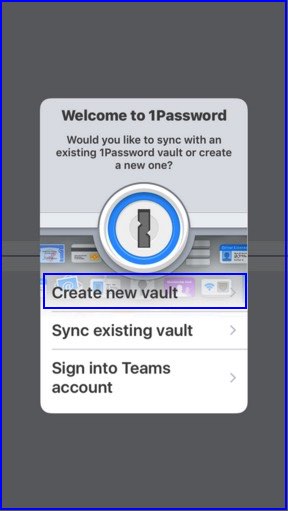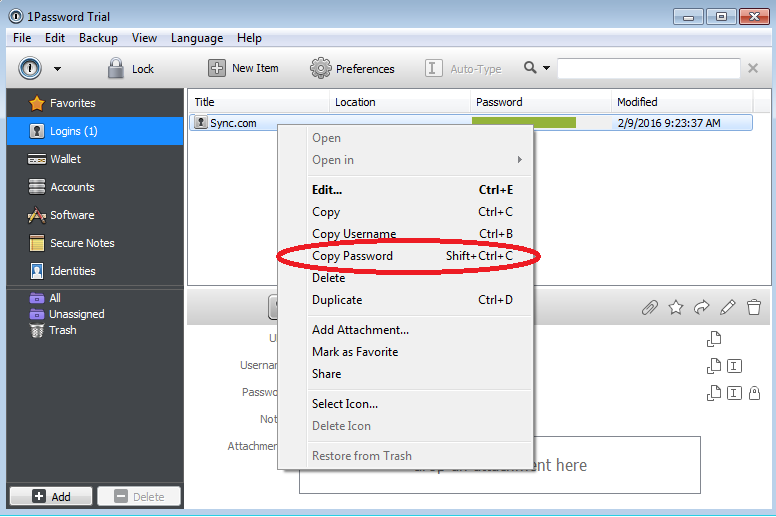

- MY 1PASSWORD ACCOUNT UPDATE
- MY 1PASSWORD ACCOUNT SOFTWARE
- MY 1PASSWORD ACCOUNT CODE
- MY 1PASSWORD ACCOUNT PASSWORD
Why you don’t need to protect your 1Password account with 2FA So even if a criminal decrypted TLS, they wouldn’t have access to anything useful. With SRP, another encryption key generated on-device protects your information while it’s in transit.
MY 1PASSWORD ACCOUNT PASSWORD
On top of that, this line of defense is bolstered by a custom protocol called Secure Remote Password (SRP).
MY 1PASSWORD ACCOUNT UPDATE
This is critical as you update your private vaults and sync those changes across your devices.įirst, you’re protected by Transport Layer Security (TLS), which is an industry-standard protocol that you encounter every time you visit a website with a HTTPS connection. When you sign in to 1Password, your private information is further protected by a unique communication system. It’s generated locally on your device when you set up your account, and just like your account password, is never sent to us.īut it doesn’t stop there. The Secret Key is a long series of randomly-selected letters and numbers, separated by dashes. This is a unique part of 1Password’s security model. You use your account password to unlock 1Password, and set up your password manager on new devices. We don’t know it, and it’s never stored on our servers. And it doesn’t rely on a single password to encrypt everything in your private vaults.Īll of your private information is protected by: Why is the situation any different for my 1Password account?”īecause 1Password uses encryption, not just authentication, to protect your data. How 1Password is secure by designĪt this point you might be thinking, “Okay, 2FA sounds great. 1Password will also autofill these codes in any browser, saving you precious time each day. That means you don’t have to waste time opening your email or a standalone authentication app to sign in to your online accounts. You can use 1Password as an authenticator for sites that support 2FA.
MY 1PASSWORD ACCOUNT CODE
With 2FA enabled, they wouldn’t be able to sign in to the account, because the service would ask for a one-time code that you’ve chosen to be sent via email, SMS, or an authenticator app. Two-factor authentication is a second line of defense that makes it tougher for criminals to gain access to accounts that are otherwise only protected by a username and password.įor example, imagine a criminal managed to find or guess the password to one of your social media profiles. To explain why, we need to unpack what 2FA does, and how your data is protected by 1Password’s security model. But there’s also no harm in enabling 2FA if you have a special set of circumstances, or think it will give you a little more peace of mind. The short answer is no, it’s not necessary. If you have any credit cards, addresses, or other information saved in Safari, copy them manually into 1Password.You’ve probably heard or read the advice: ‘ Turn on two-factor authentication (2FA) everywhere it’s offered.’ After all, it’s a great way to add an extra layer of protection to your online accounts.īut should that include your 1Password account? If you want to change anything about the import, like importing the data into a different vault, click Undo Import and start again.

If you’re importing personal data, choose the Personal or Private vault.

Click your name in the top right and choose Import.In Safari or another browser, sign in to your account on.Save the Passwords.csv file to your desktop and enter the password you use to log in to your Mac.Open Safari and choose File > Export > Passwords from the menu bar.To export your data from Safari, follow these steps on your Mac:
MY 1PASSWORD ACCOUNT SOFTWARE
Before you export your iCloud Passwords, temporarily turn off any backup software you may be using, so the unencrypted export file isn’t backed up.


 0 kommentar(er)
0 kommentar(er)
